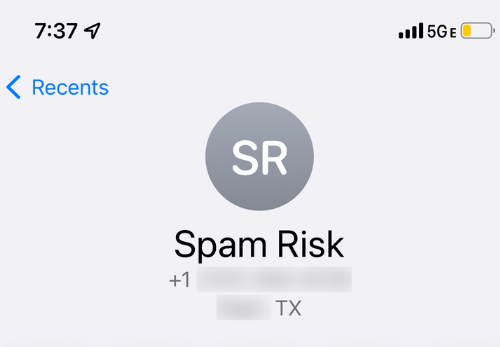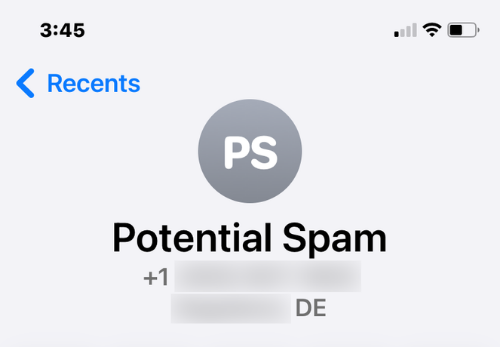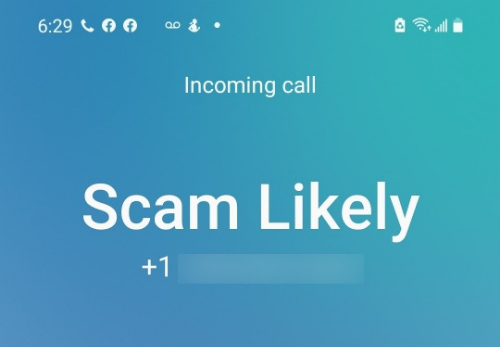Mislabeling of a company’s phone calls can devastate its outbound calling strategy. This happens when algorithms in the terminating network incorrectly label a phone number as untrustworthy and display a warning like “Spam Risk” or completely block the call to recipients. Naturally, most calls labeled as spam and all blocked calls go unanswered.
You can check the phone number reputation of your company’s numbers by using a third-party monitoring service or take the DYI approach. Here’s how you can check phone number reputation in five steps.
Steps to check your phone number reputation
From each phone number you want to assess, you need to make three test calls and observe the outcome. Throughout these steps, you’ll call AT&T Wireless, T-Mobile, and Verizon Wireless. This allows you to determine the perceptions of your phone number by the leading analytic platforms Hiya, First Orion, and Transaction Network Services (TNS). These analytic platforms make call labeling decisions for the most popular wireless providers and other terminating networks.
1. Prepare to make test calls from your phone numbers
Establish access to your company’s phone system with the ability to place outbound calls from each of the phone numbers you are going to evaluate. Use three mobile phones, each one served by AT&T Wireless, T-Mobile, and Verizon Wireless respectively. Have the mobile phone numbers handy to call for the next step.
Make sure that cell phones are not running any third-party spam apps like RoboKiller, YouMail, or Nomorobo. These apps will skew the results, since you would not be able to determine if a spam label is being applied at the app or the network level.
Make sure the phones’ contact lists don’t include your company’s phone numbers. If a phone number is listed as a contact, then the cell phones may suppress display of the network’s spam warning, altering the results.
Finally, don’t configure your mobile phones to have all unknown calls diverted to voicemail. Some users set up their cell to do this if an incoming call is from a number that’s not a contact.
2. Test call to each cell phone number
It’s important for the test calls to go through all three carriers. Why call all three? The carriers use Hiya, First Orion, and TNS analytic platforms. Each platform has its own algorithm. Platforms each make their own determinations whether a call is suspicious. One platform may treat your phone number as trustworthy while another one considers it spam.
Place a call from your company’s phone number to each of the mobile phone numbers and observe the results.
3. Assess your test call results
What spam results look like
Observe the screen display on the cell phone when it receives the call. Do you see warning that the call is spam, scam, or fraud? The common screen displays for suspicious traffic are below. Seeing any of these means you’ll need to correct the call labeling yourself or with a partner.
AT&T

Verizon

T-Mobile

What blocked calls results are like
What if the mobile phones didn’t receive the call? Instead of merely labeling the call as suspicious, the network(s) may have considered the call especially risky and blocked the call. Customers’ phones aren’t ringing when you call. They aren’t getting your message, and you’ll need to correct call labeling.
What good results look like
If your call comes through just fine, congratulations. Your number isn’t mislabeled or blocked. This is a good sign, but you should keep monitoring and tracking.
4. Your call was mislabeled. How do you correct call labeling?
If your call is mislabeled or blocked, you’ll have to submit a report through the public complaint process to fix it using the DIY call reputation management method or partner with a vendor. The DIY method is free but can take weeks to be processed. Based on which of your test calls encountered the problem, you’ll need to use one or more of the following sites to submit your complaint:
- Hiya for AT&T Wireless
- First Orion for T-Mobile
- TNS for Verizon Wireless
That’s not all. These platforms change and update their algorithms, so you must continue to check your phone numbers’ reputation.
5. Ongoing vigilance is needed – repeat and monitor weekly
Even if your test calls all had a good outcome, that doesn’t mean you’re done. You need to monitor your reputation by periodically repeating the test calls – we recommend weekly. If your calls aren’t labeled as spam today, they might get labeled as spam tomorrow and your numbers’ reputations may change.
Additionally, a single successful test call cannot give a definitive conclusion that your number has a good reputation. This is only an estimation. The analytic platforms are dynamic systems that utilize a multitude of real-time factors to decide what any given call should be labeled. This can be frustrating since two calls from the same number could receive different treatment.
Do you want to learn more about modernizing your contact center and accelerating customer engagement with generative AI and automation? Schedule an AI and automation Customer Interaction Intent Study with IntelePeer now.
Benefits of this process
While lengthy, this process may be the best choice for some companies. For one, it provides good insight into your call labeling, which is convenient.
Secondly, it may not be too burdensome for the right company. An organization that doesn’t rely on outbound calls and has the patience to wade through the public complaint process could practice these steps weekly for one phone number. But multiple numbers may be a different story.
Is there a better way?
While most of these steps may be easy for one phone number – but not necessarily fast – it can quickly escalate for a handful of numbers. And, since phone number reputations change over time, you’ll need to keep it up for each phone number and each carrier.
Finding a problem is one thing, but handling it is another. Four out of five steps help you identify and record any issues, however, handling the problems that arise (step three) is an entire process of its own and not realistically scalable.
Partner to outsource call reputation management
Companies like IntelePeer can do the monitoring for you, fix mislabeling when it is discovered, and best of all, prevent mislabeling from happening. We’ll help manage your reputation no matter how many phone numbers your company uses. When we find mislabeling, we handle it quickly, and your call reputation management is on autopilot.
